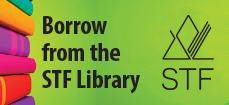Accounting 10, 20, 30
Course Configurations
ACCT34C
Module 34C: Agricultural Accounting Procedures (Optional)
Outcome
Investigate accounting practices for agricultural business.
Indicators
| (a) | Review cash control principles and give examples of how those principles may be used in a farm setting. |
| (b) | Distinguish and sort farm financial information (e.g., vehicle, fuel, power, groceries, property tax, veterinary) into business and personal categories in preparation for journalizing. |
| (c) | Categorize farm business expenses (e.g., purchase of seed, insurance premiums, percentage of utility bills, repairs and maintenance, feed) and farm business income (e.g., sales from crops, refunds, livestock products). |
| (d) | Distinguish between a synoptic/combination journal in an agricultural setting and a synoptic/combination journal created in a general business setting and describe the similarities and differences between these two books of original entry. |
| (e) | Recognize cash and accrual methods of accounting and describe the circumstances under which each may be used. |
| (f) | Analyze how transactions such as cash inflow, cash outflow and accounting software are recorded to keep accurate agricultural business records. |
| (g) | Design and present column headings for the cash inflow and cash outflow synoptic/combination journals given transactions. |
| (h) | Analyze and record transactions related to an agricultural setting into cash inflow and cash outflow synoptic/combination journals. |
| (i) | Balance and post column totals of completed synoptic/combination journals to general and subsidiary ledger accounts. |
| (j) | Prepare a cash statement of farming income and expenses (i.e., income statement), a statement of net worth (i.e., balance sheet), and an accrual income statement from ledger accounts and the synoptic/combination journals. |
| (k) | Analyze scenarios (e.g., increased fertilizer or fuel expense, drop in livestock price) using farm records and justify actions to be taken the following year based on those records. |
Loading...


R009355
Financial Accounting(Seventh Canadian Edition)
This resource consists of 10 chapters which contain a variety of information, assignments, activities, projects, ethical questions and business analyses that may be more suitable for accounting students. There are may project ideas located in the Stop + Think, Cooking the Books, and Spotlight on Businesses sections. There is an online component to this resource that offers tutorials, homework and assessment program.


